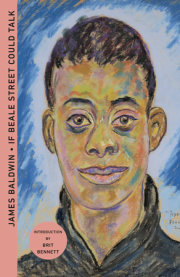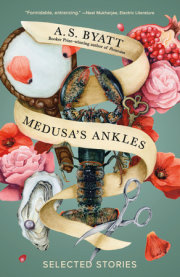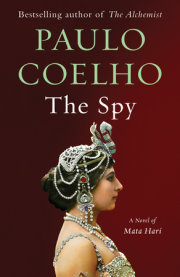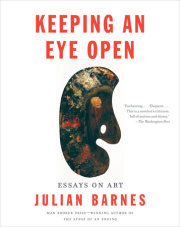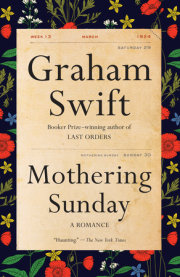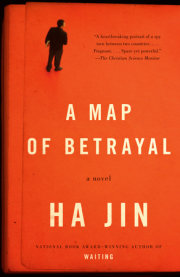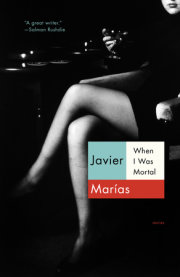I was brought up the old-fashioned way, and could never have dreamed that I would one day be ordered to kill a woman. You don’t touch women, you don’t beat them, you don’t do them any physical harm and you avoid all verbal violence, although in that regard they themselves don’t always hold back. More than that, you protect and respect them and give way to them, shield them and help them if they’re pregnant or with a child in their arms or in a pushchair, you offer them your seat on the bus or in the metro, you even safeguard them when walking down the street, keeping them away from the traffic or from the effluvia that, in the olden days, used to be tossed over balconies, and if a ship founders and seems likely to go under, the lifeboats are for them and their little ones (who belong more to them than to us men), at least the first spaces. When a group of people are about to be shot en masse, the women are sometimes spared and allowed to leave; they are then left without husbands,without fathers, without brothers and even without adolescent let alone grown-up sons, but they are allowed to go on living, mad with grief like tormented ghosts, for whom, nevertheless, the years pass and thus they grow old, chained to the memory of the world they have lost. They are obliged to become the depositories of memory, the only ones left when it seems no one is left, and the only ones who can tell what happened.
Anyway, this is what I was taught as a child, but that was then, and it wasn’t always followed to the letter. Yes, that was then and was applied in theory but not in practice. After all, in 1793, a queen of France was guillotined, and before that, countless women accused of witchcraft were burned to death, as was the soldier Joan of Arc, to give just a couple of well-known examples.
Yes, of course, women have always been killed, but it’s something that goes against the grain and causes great unease, it isn’t clear whether Anne Boleyn was given the privilege of being put to the sword rather than beheaded with a crude, bungling axe, or indeed burned at the stake, because she was a woman or because she was the Queen, or because she was young and beautiful, beautiful according to the tastes of the time and according to reports, although reports are never to be trusted, not even those of eyewitnesses, who see and hear only vaguely, and who are often wrong or else lie. In engravings of her execution she is shown on her knees as if she were praying, her body erect and her head held high; if they had used an axe, she would have had to rest her chin or cheek on the block and adopt a more humiliating, more uncomfortable posture, to have grovelled if you like, and this would also have offered a clearer view of her backside to those who could see it from where they were standing. It’s odd that she should be so concerned about comfort or composure in her final moments in this world, and even about elegance and decorum; of what possible importance could this be to someone who was about to become a corpse and disappear beneath the earth, and in two separate pieces. These depictions also include the swordsman of Calais, as he is called in various accounts, so as to distinguish him from any ordi-nary executioner—brought over ex profeso because of his great skill and, possibly, at the request of the Queen herself—and he is always shown standing behind her and out of sight, never in front of her, as if it had been agreed and decided that she would be spared having to see the coming blow, the trajectory of the heavy weapon which, nevertheless, advances swiftly and unstoppably, like a whistle once it has left the lips or like a sudden strong gust of wind (in a couple of the images she has her eyes blindfolded, but not in most of them); so that she would not know the precise moment when her head would be cut off with a single clean two-handed blow and fall onto the dais face up or face down or on one side, on the neck or the top of the head—who knows, she certainly would never know; so that the movement would catch her by surprise, if there can be any surprise when the person knows why she has come and why she is kneeling there, without a cloak about her, at eight o’clock in the morning on a still-cold English day in May. She is, of course, kneeling to facilitate the executioner’s task and not call into question his skill: he had been so good as to cross the Channel and offer his help, and he probably wasn’t particularly tall. It seems Anne Boleyn had insisted that one blow with the sword would be enough because she only had a little neck. She must often have put her hands about it as proof.
She was, at any rate, treated more considerately than Marie Antoinette two and a half centuries later, for it is said that she was treated far worse in her October than her husband Louis XVI in his January, for he had preceded her to the guillotine by about nine months. The fact that she was a woman was of no interest to the revolutionaries, or perhaps they considered treating women differently to be in itself anti-revolutionary. A lieutenant called de Busne, who had treated her respectfully during her time in prison, was arrested and replaced by another, surlier guard. When it came to the King, they had simply tied his hands behind his back when he reached the foot of the scaffold; he had been transported there in a closed carriage, which belonged, I believe, to the mayor of Paris; and he was allowed to choose the priest who attended him (a nonjuring priest, that is, one who had not sworn loyalty to the Constitution and to the new order, which changed on a daily basis and which had condemned the King to die). His Austrian widow, however, had her hands bound before the journey, which she had to make in an open cart, thus leaving her far more vulnerable and exposed to the unbridled loathing on the faces of the rabble and to their insults; also they only offered her the services of a constitutional priest, which she politely declined. The chronicles say that although, during her reign, she had been said to be lacking in manners, these returned to her in her final moments: she went up the steps to the scaffold so quickly that she stumbled and trod on the executioner’s foot, for which she immediately apologized, as if this were her usual response (‘Excusez-moi, Monsieur,’ she said).
The guillotine had its inevitably undignified preliminaries: the condemned man not only had his hands tied behind his back, he would also have his arms tightly bound to his sides, like a foreshadowing of the shroud; once rendered rigid and ungainly, almost immobilized, two assistants would have to pick him up like a parcel (or as they used to do with dwarfs in circuses before firing them from a cannon) and manoeuvre him into position, face down, prone, completely horizontal, so that his neck fitted in the designated space. In that, Marie Antoinette and husband were equals: they both found themselves objectified at the end, treated like sacks or bales of cotton or torpedoes in some archaic submarine, like bundles with a protruding head that would suddenly tumble off in no particular direction, until someone stopped it by grabbing the hair in full view of the crowd. Not one of them did what St Denis did, according to an astonished French cardinal, who described how, after St Denis’ martyrdom and decapitation during Emperor Valerian’s persecution of Christians, the saint-to-be picked up his head and walked with it under his arm from Montmartre to the place of his burial (thus considerately lightening the porters’ load), where the abbey or church that bears his name was later built: a distance of five and a half miles. This marvel left the cardinal speechless, he said, although actually it so fired him up that a witty lady listening to his account interrupted him, cutting the incident down to size with a single sentence: ‘But, sir!’ she said. ‘The distance is nothing, it’s only the first step that is difficult.’
Copyright © 2023 by Javier Marías. All rights reserved. No part of this excerpt may be reproduced or reprinted without permission in writing from the publisher.













